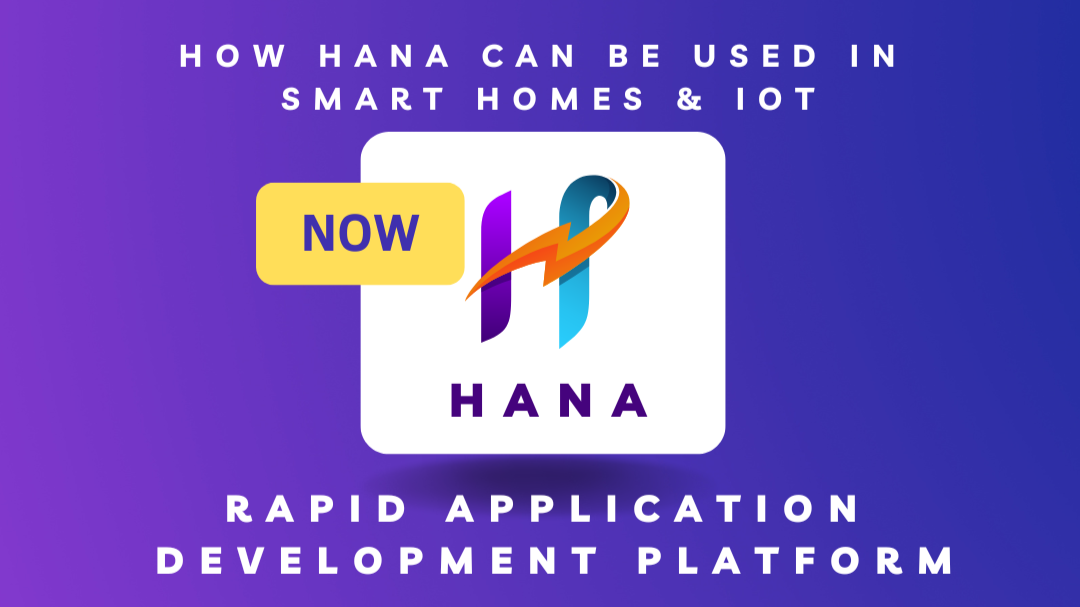- by admin
- April 22, 2025
How HANA Can Be Used in Smart Homes & IoT

HANA (High-Performance Analytic Appliance) can significantly enhance the functionality and efficiency of Smart Homes and IoT (Internet of Things) applications. By leveraging real-time data analytics, seamless integration, and scalability, HANA helps create connected, efficient, and intelligent systems for smart homes and IoT devices. Here’s how HANA can be applied in this sector:
1. Real-Time Data Processing
– Implementation: HANA can process real-time data from IoT devices, such as smart thermostats, lighting systems, security cameras, and other connected devices.
– Benefits: Provides immediate insights and actions based on sensor data, such as adjusting the temperature, turning off lights, or triggering security alerts in real-time.
2. Predictive Analytics for Maintenance
– Implementation: HANA can be used to analyze data from IoT devices to predict when maintenance is required for home appliances or smart systems (e.g., refrigerators, HVAC systems).
– Benefits: Reduces downtime and maintenance costs by identifying potential issues before they occur, ensuring smooth operation and preventing costly repairs.
3. Energy Management and Optimization
– Implementation: HANA can integrate with energy consumption data from smart meters and IoT devices that control energy usage.
– Benefits: Helps optimize energy use in smart homes by analyzing consumption patterns and suggesting ways to save energy, contributing to cost savings and sustainability.
4. Home Automation and Control
– Implementation: Use HANA to create seamless automation scenarios where IoT devices work together in a smart home. For example, linking lighting, temperature control, and security systems based on user preferences.
– Benefits: Offers convenience and improves the overall home experience, such as automatically adjusting room conditions when a user arrives home.
5. Enhanced Security and Surveillance
– Implementation: HANA can analyze data from security cameras, motion detectors, and door/window sensors to detect unusual activity or potential security breaches.
– Benefits: Provides instant alerts to homeowners or authorities, enhancing security and reducing response times in emergency situations.
6. User Behavior Analysis
– Implementation: HANA can collect and analyze user behavior data, such as how often certain devices or features are used, preferences, and schedules.
– Benefits: Offers insights into habits, which can be used to optimize smart home experiences, for example, adjusting settings based on user routines or suggesting energy-saving tips based on past behavior.
7. Seamless Device Integration
– Implementation: HANA can serve as a central platform for integrating data from a wide range of IoT devices in the smart home ecosystem, whether it’s from different manufacturers or technologies.
– Benefits: Ensures that all devices communicate effectively with each other, providing a unified user experience and seamless interaction across different smart home systems.
8. Voice Control Integration
– Implementation: Integrate HANA with voice-controlled smart assistants (e.g., Amazon Alexa, Google Assistant) to manage IoT devices and home automation systems through voice commands.
– Benefits: Offers a hands-free, more convenient way to control home devices, making the system more accessible and user-friendly.
9. Data-Driven Decision Making
– Implementation: Use HANA’s powerful analytics capabilities to analyze and visualize large amounts of data from connected devices, helping homeowners make informed decisions about energy use, security, and home settings.
– Benefits: Allows for better control and optimization of smart home environments, contributing to improved efficiency and user satisfaction.
10. Health and Wellness Monitoring
– Implementation: HANA can integrate with wearable devices and health sensors in smart homes to track residents’ health metrics (e.g., heart rate, sleep patterns, air quality).
– Benefits: Enables proactive health management and alerts users to potential health risks, contributing to a healthier living environment.
11. Real-Time Alerts and Notifications
– Implementation: HANA can process sensor data and trigger real-time alerts for various conditions, such as water leaks, unusual temperature fluctuations, or smoke detection.
– Benefits: Provides immediate notifications to homeowners via mobile apps, email, or integrated home automation systems, ensuring quick responses to potential issues.
12. Automation of Daily Tasks
– Implementation: HANA can be used to set up automated schedules for home systems like lighting, heating/cooling, and even grocery reordering based on usage patterns.
– Benefits: Reduces the need for manual adjustments, streamlining daily tasks and enhancing convenience for homeowners.
Conclusion
By integrating HANA into Smart Homes and IoT systems, organizations can create more connected, efficient, and intelligent living spaces. HANA’s real-time analytics, predictive capabilities, and seamless device integration empower users to optimize energy usage, improve security, and enhance overall comfort. This technology enables a more personalized, proactive approach to home management and IoT solutions, driving innovation in the smart home industry.
